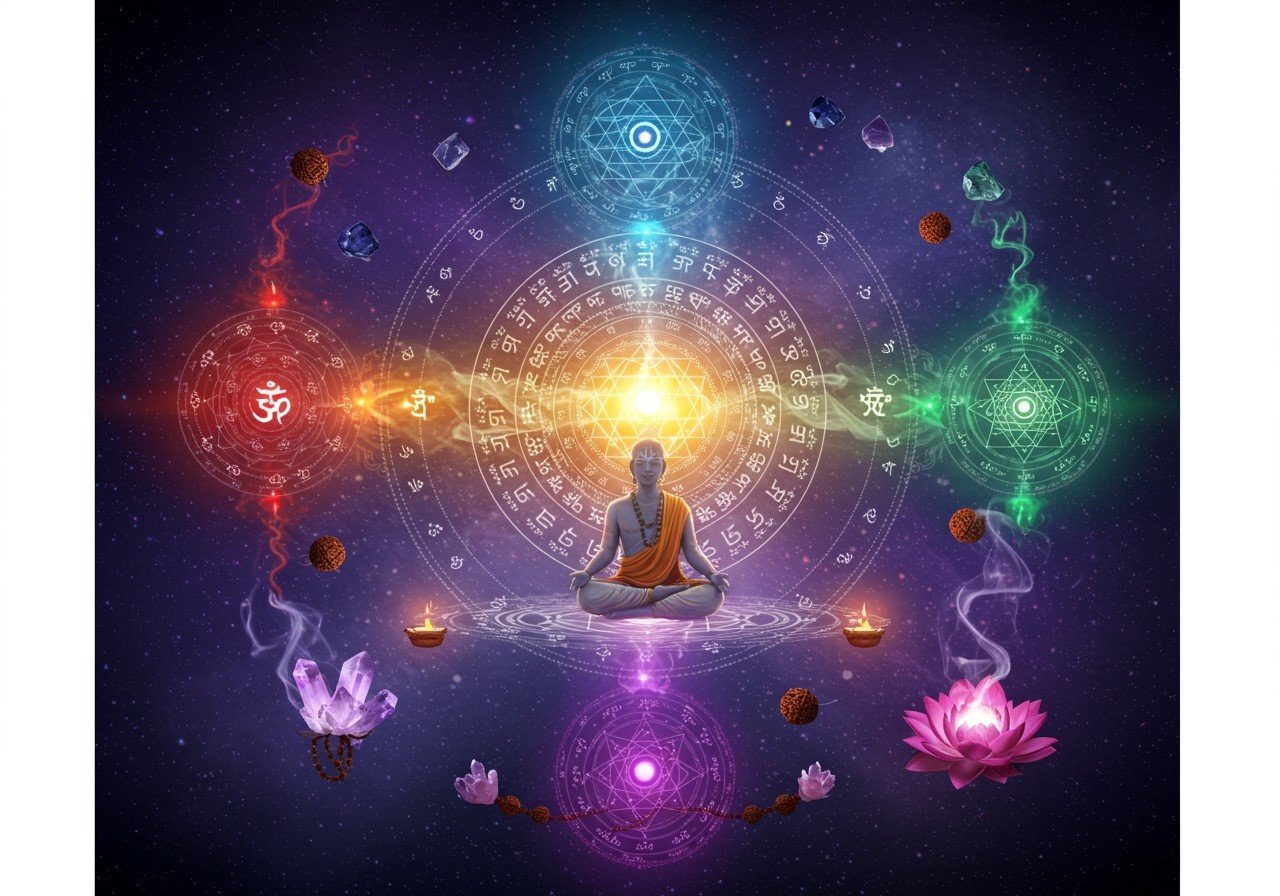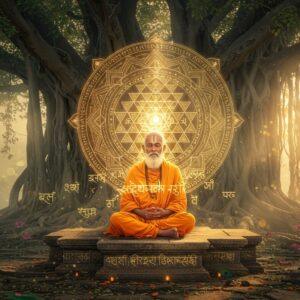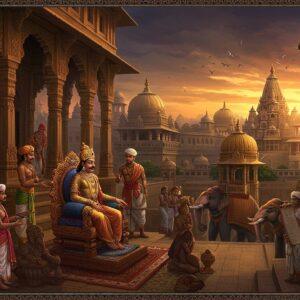Delving into Panchamakara Sadhana and Upasana

Embark on a journey into the profound world of Panchamakara Sadhana and Upasana, a deeply spiritual practice rooted in the ancient tradition of Tantra. This guide is crafted to illuminate the intricacies of the Panchamakara ritual, emphasizing its five core elements. Discover the relevance of this practice for culturally rooted Indians who cherish tradition and seek authentic spiritual experiences.
Understanding Panchamakara Sadhana
Panchamakara, often referred to as the “Five Ms,” comprises a set of five ritualistic elements central to Tantra. These elements are:
- Madya (Wine): Symbolizing divine ecstasy and the liberation from inhibitions, Madya represents the dissolution of the ego.
- Mamsa (Meat): Representing the acceptance of our primal nature and the overcoming of aversion, Mamsa signifies detachment from worldly attachments.
- Matsya (Fish): Symbolizing adaptability, fluidity, and the ability to navigate the currents of life, Matsya encourages us to embrace change.
- Mudra (Parched Grain/Gesture): Signifying nourishment, grounding, and the connection to the earth element, Mudra represents stability and sustenance on the spiritual path. You can find high-quality grains for your rituals at Poojn.in.
- Maithuna (Sexual Union): Embodying the sacred union of energies and the creation of life, Maithuna represents the ultimate connection and transcendence.
Comprehending these elements is crucial for spiritual awakening and personal growth. Each element serves as a stepping stone towards connecting with a higher consciousness.
Panchamakara Upasana: A Path of Devotion
Upasana is a practice centered around devotion and worship. It involves integrating the Panchamakara elements into one’s daily spiritual routine with reverence and mindfulness. The goal is to internalize these elements, fostering a profound connection with the divine.
Practitioners incorporate these rituals by:
- Creating a Sacred Space: A dedicated space, cleansed and purified, allows for focused energy and undisturbed communion with the divine. Consider using items like traditional Baran Dalas to create this sacred ambiance.
- Setting Intentions: Before commencing the rituals, setting clear intentions helps direct the energy and focus the mind on the desired spiritual outcome. This could involve prayers, affirmations, or visualizations.
- Regular Practice with Devotion: Consistent and devoted practice is essential for deepening the connection with the divine. This dedication strengthens the spiritual journey and amplifies the effects of the rituals.
Upasana places emphasis on devotion, while Sadhana focuses more on personal discipline and mastery. The two practices complement each other, offering a balanced spiritual path.
The Significance of the Five Elements in Tantra
Tantra utilizes rituals involving the five elements—earth, water, fire, air, and ether—for spiritual cultivation and beneficial effects. These rituals aim to purify and transform individuals on profound levels, negate negative karma, elevate emotional tendencies, and bring about higher states of consciousness.
- The Five Elements (Pancha Mahabhuta): These are ether (Akasha), air (Vayu), fire (Agni or Tejas), water (Apas), and earth (Prithvi). They’re seen as the fundamental building blocks of the cosmos and are present within us.
- Bhuta Shuddhi: A Tantric process and chakra meditation practice aimed at balancing and purifying these five elements within the body. It creates harmony within and strengthens the connection to the divine.
- Pancha Mahabhuta Shakti Kriya: This practice, through persistent effort, can lead to Bhuta Siddhi, the mastery of the elements. It balances Tattvic vibrations, calms the mind, and induces deep relaxation.
- Yoni Puja: A powerful practice involving reverence to Shakti, the divine feminine energy. It sometimes involves consecrating the five elements using liquids representing them (yogurt, honey, milk, water, and edible oil), symbolizing nourishment and purification.
Panchamakara: A Path of Transformation
In contemporary society, Panchamakara is much more than just a ritual. It’s a journey toward self-discovery and enlightenment. It offers a way to connect with our deepest selves, transcending earthly desires.
Embracing Tradition with Modern Ease at Poojn.in
Poojn.in offers a wide selection of items to support your Panchamakara Sadhana. As India’s leading provider of ritual items, you can find everything you need, from pure copper vessels to sacred grains and traditional accessories. Browse our collections of Pooja Samagri and Clay Items to enhance your practice.
Our trusted brands guarantee authenticity and quality. You can explore specific items like Red Sandalwood Malas or Five Mukhi Rudraksh Malas to deepen your spiritual experience.
Panchamakara Sadhana and Upasana offer profound spiritual experiences. By embracing these practices with respect and understanding, individuals can embark on a path of personal growth and spiritual fulfillment.
Frequently Asked Questions
What is the essence of Panchamakara Sadhana? Panchamakara Sadhana utilizes five symbolic elements—Madya (wine), Mamsa (meat), Matsya (fish), Mudra (parched grain/gesture), and Maithuna (sexual union)—to guide practitioners towards spiritual liberation by confronting and transcending worldly attachments. It’s a journey of self-discovery, not indulgence.
How is Panchamakara Upasana practiced? Upasana involves incorporating these elements into daily spiritual routines under the guidance of a knowledgeable guru. The practice is deeply symbolic and requires proper understanding and reverence for its transformative power. It is not about literal interpretation but about inner transformation.
What is the significance of the Five Ms in Tantra? The Five Ms represent different facets of human nature and the material world. Engaging with them symbolically helps practitioners confront their attachments and move towards spiritual freedom. They are tools for inner alchemy, not objects of gratification.
Is Panchamakara Sadhana suitable for everyone? Panchamakara Sadhana is a specialized practice within Tantra, best suited for those with a strong foundation in spiritual practices and under the guidance of an experienced guru. The guru ensures the practices are conducted responsibly and ethically, respecting the sacredness of the tradition.


